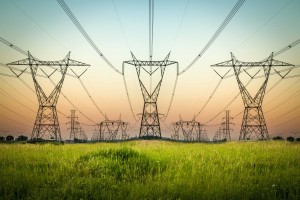Clean Energy Canada | Canada’s electricity grid isn’t ready for a net-zero future: report
December 1, 2021

VANCOUVER — A net-zero 2050 will require a lot more clean electricity than is currently produced, and despite having a relatively clean grid today, Canada isn’t yet ready for the needs of tomorrow.
So concludes a new Clean Energy Canada report, Underneath It All, which explores Canada’s myriad clean electricity advantages—and the risk of squandering them.
While the federal government recently announced its aim to make Canada’s currently 83%-emissions-free electricity grid a 100%-net-zero one by 2035, there exists no additional plan—federally or provincially—to roughly double the production of electricity by 2050.
Such a bold expansion will be required as Canada phases out fossil fuel use in favor of electrification: the process of connecting our vehicles, heating systems, industries, and more to the grid.
Clean Energy Canada’s new report offers a number of recommendations, including investing in a national clean electricity system, improving provincial collaboration, and streamlining the approval process for new clean energy projects.
By doing so, the report concludes, Canada can achieve its climate goals while driving job creation and economic competitiveness. As our closest trading partners and many of the world’s largest companies and investors demand cleaner goods, powering industries with clean electricity gives Canadian products a low-carbon advantage.
In short, clean electricity underpins Canada’s road to net zero. But governments must act today to ensure we are ready.
KEY FACTS
- The International Energy Agency estimates that, for the world to reach net zero by 2050, electricity generation worldwide must increase by over 2.5 times between today and 2050.
- 82% of all new electricity capacity worldwide was from renewables in 2020, and 62% of the renewable capacity added had lower costs than the cheapest new fossil fuel option.
- In the lead up to the last election, the federal government promised to reach a net-zero electricity grid by 2035 by implementing a Clean Electricity Standard.
- A recent study ranked Canada second out of 42 countries assessed for their ability to meet electricity needs from renewable solar and wind sources.
- Canada’s residential electricity rates are the cheapest in the G7, while provinces with the cleanest grids (Quebec, British Columbia, and Manitoba) tend to have the lowest rates in the country.
- Canada is among the best-positioned nations to produce low-cost green hydrogen, and a number of such facilities are now under construction.
- Canada currently exports 8% of its electricity to the U.S. for a total value of $2.6 billion.
- Indigenous communities and enterprises are the largest single owner of clean energy assets in Canada after Crown and private utilities.
- In B.C., First Nations are involved in 79 grid-tied renewable energy projects, which together deliver 13% of the province’s electricity supply.
- BloombergNEF projects energy storage capacity around the world to boom more than 20-fold by 2030 compared to 2020 levels.
- South Australia currently gets 62% of its electricity from wind and solar and, combined with grid-scale battery storage, has not lost a single hour of electricity in the past five years; annual household electricity costs have declined A$303 since 2018.
RESOURCES
Report | Underneath It All